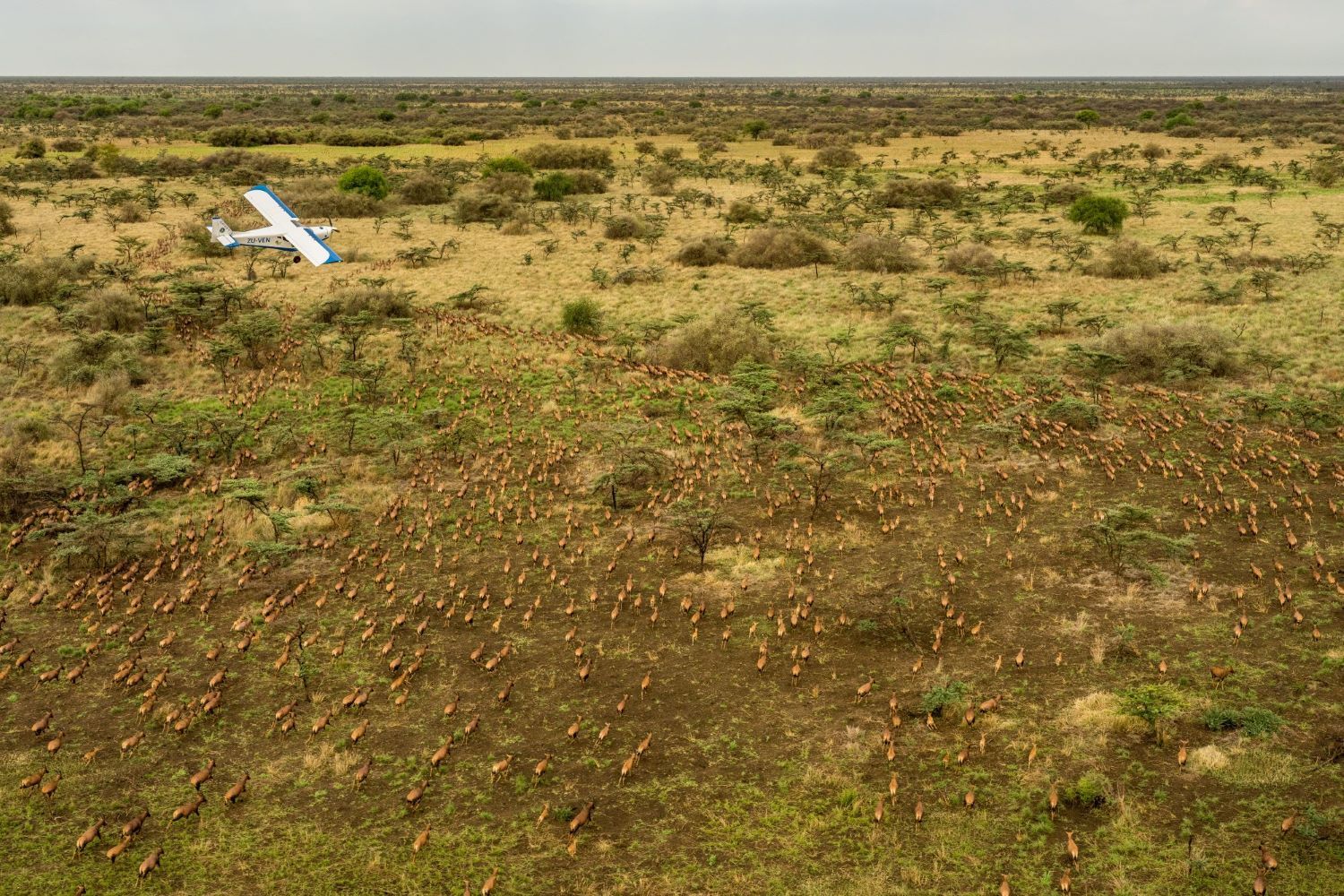Unbeknown to most, the Great Migration of wildebeest and zebra in East Africa is not the world’s largest mammal migration. This honour belongs to South Sudan, where six million animals from four migratory antelope species – the White-eared kob, Tiang, Mongalla gazelle and Bohor reedbuck traverse the Boma Bandingilo Jonglei Landscape.
The immense and little-known Great Nile Migration is now being better understood through an aerial survey conducted by African Parks, in partnership with the South Sudanese Ministry of Wildlife Conservation and Tourism, with support from The Wilderness Project.
To execute the mammoth survey, two aircraft equipped with cameras captured over 330 000 images. A team of seven University of Juba graduates, trained in specialised software, then meticulously analysed 59 718 photos across 64 transects, documenting wildlife presence. Data collected from 251 tracking collars attached to large mammals was also integrated into the assessment, providing a holistic understanding of the region’s ecological dynamics.
The survey found that the migration covers an astounding 122 774 sqkm of contiguous landscape – an area larger than Malawi.
The project will assist in preserving this remarkable natural phenomenon and protecting it from the significant vulnerability it faces.
“Unmanaged exploitation of this resource could trigger the collapse of migratory patterns, ecological integrity, and the livelihoods dependent upon them,” African Parks said in a statement.
























